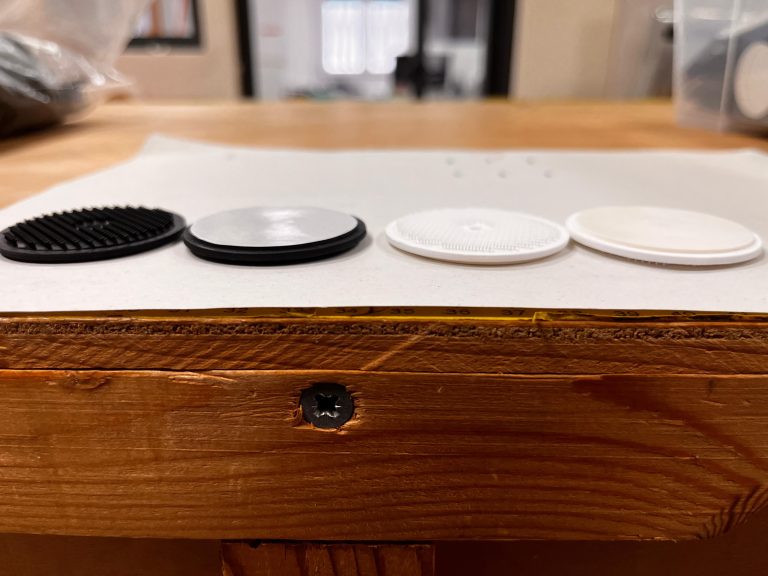 Paolo Ferrari, an architect specialising in the design of boat and ship interiors and researcher at the Department of engineering and architecture of the University of Trieste, is the author of the new book published by Tecniche Nuove “Designing inclusive yachts: a new approach to yacht design”.
Paolo Ferrari, an architect specialising in the design of boat and ship interiors and researcher at the Department of engineering and architecture of the University of Trieste, is the author of the new book published by Tecniche Nuove “Designing inclusive yachts: a new approach to yacht design”.
A more inclusive boat design
Exsisting accessible sailing yachts are today very few in number and have been built thanks to the efforts of illuminated owners. Certainly a new design approach, inspired by the principles of Design for Inclusion, would favour the building of boats that can satisfy different kinds of user at the same time, creating inclusion and integration and opening new commercial prospectives: think, for example, of the blue water charter market with fleets of totally accessible yachts.
The book “Designing inclusive yachts: a new approach to yacht design“, written by the italian architect Paolo Ferrari is based on the analysis and study of design solutions that allow anyone to experience actively sailing on the sea, creating inclusion on land and on board.
According to recent statistical and scientific studies, by 2050 there will be an exponential increase at world level in old people and those with various kinds of disability.
How to intervene
To face up to these phenomena it is important to intervene as soon as possible in all the vital sectors with studies aimed at solutions that create well-being, integration and autonomy. To date, both sailing and motorboats have spaces that are often inaccessible, on deck and in the interior.
The book focuses on all those possible solutions and aids that make the boat accessible to everybody, following the principles of Design for All. But design is not the only means to achieve the goal: it is fundamental that this initiative come from governance, through clear laws and regulations.
Once the guidelines indicated by the top are enacted, shipyard associations must activate to form a commission of experts to draw up a protocol for the building of totally accessible yachts. In parallel, economic incentives rather than tax benefits or financed projects have to be offered to encourage builders to apply this protocol.
Designing and building in an ethical way must always be a choice, never an obligation, and it is right that those who decide to follow this new path must in some way have an economic advantage.
The book of yacht design
 The book consists of 6 six chapters. The first one illustrate the most recent statistics on the world sailing yachts fleet, on the total number of people with disabilities and the category on which the research focuses. In the following chapter, the author analyses the state-of-the-art of the production of sailing yachts from the 1980s to today, concluding that almost nothing has been done to solve the problem of accessibility and the whole design have generally remained almost unchanged, regardless of hull size.
The book consists of 6 six chapters. The first one illustrate the most recent statistics on the world sailing yachts fleet, on the total number of people with disabilities and the category on which the research focuses. In the following chapter, the author analyses the state-of-the-art of the production of sailing yachts from the 1980s to today, concluding that almost nothing has been done to solve the problem of accessibility and the whole design have generally remained almost unchanged, regardless of hull size.
In addition the design method has always based on a kind of “stretching” that changes the size of the hull but not the substance it contains.
From these premises, the second and most important part of the research begins, suggesting guidelines that that wants to be a starting point to find solutions that can overcome all problems of accessibility and exploitation of the exteriors and interiors spaces, through free-hand illustrations that semplify the understanding of the most appropriate technical solutions for favouring accessibility and layout definition.
The book ends with a collection of author’s design experiences on various sizes of sailing boat, applying innovative ideas such as ramps and new concepts of passing or tilting helms, to name just some, to try to solve all the problems that exist on sailing yachts.
About the author
Paolo Ferrari is a Ph.D. Architect and Research Fellow at the University of Trieste. Winner of several yacht design awards, he is specialised in the design and engineering of interiors for sailing and motorboats and for cruising ships. His research about Design for Inclusion in leisure yacht sector has been recently published in Italy.







